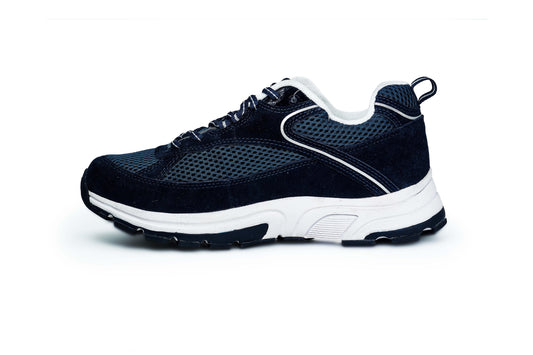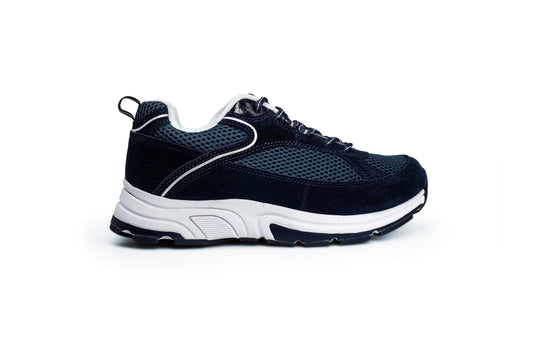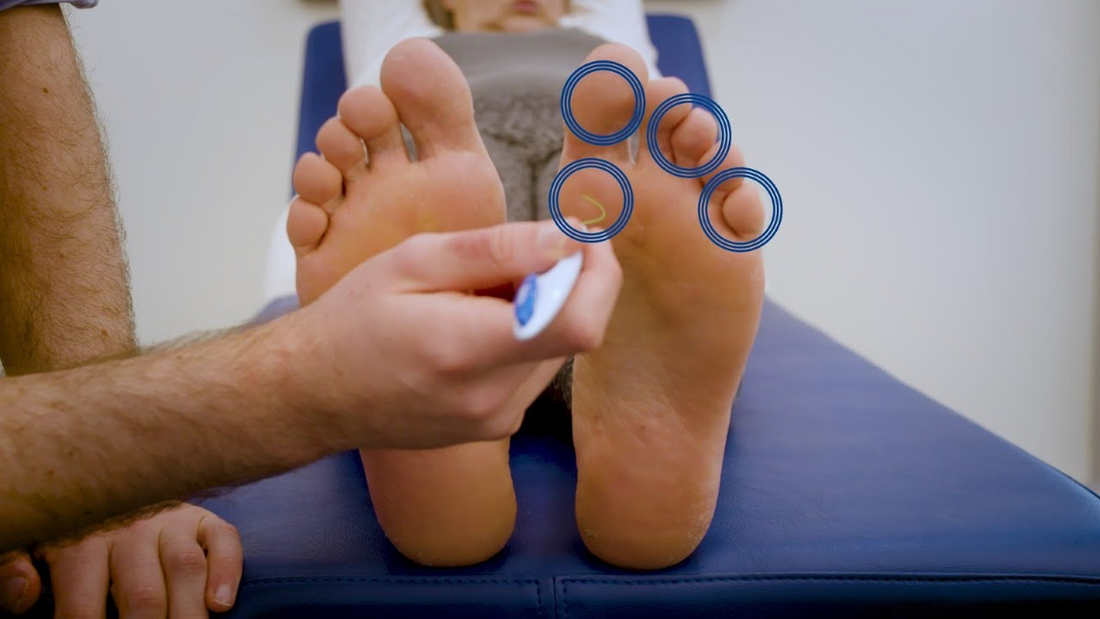IMPACT OF HIGH BLOOD SUGAR ON FOOT HEALTH
High blood sugar levels can significantly cause two diabetic foot complications: diabetic neuropathy and reduced blood flow (ischemia). These conditions can result in serious foot problems if not properly managed.
Diabetic Neuropathy and Its Types
Diabetic neuropathy can happen to individuals with both type 1 and type 2 diabetes. This condition develops when raised blood sugar levels disrupt the protective sheath, nerve structure, and function. Throughout our body, all nerves are affected but our leg contains the longest nerve and reduced blood vessels making them the first to show signs of damage in the feet. They are further divided into three categories, depending on the nerve affected.
- Sensory Diabetic Neuropathy :
It is the most prevalent form and directly affects the nerves that carry critical signals from your brain and spine to your body and back again. It usually develops in both feet, starting from the toes and progressing upward. Patients may feel mild numbness or more severe indications like pins and needles, tingling, burning sensations, or small electric shocks. This discomfort often worsens at night. The most dangerous aspect of sensory neuropathy is the loss of pain sensation. Patients may not feel injuries from sharp objects or burns from hot water. Lack of sensation leads to unnoticed wounds that can develop into foot ulcers due to delayed treatment.
- Autonomic Neuropathy:
This type affects nerves controlling involuntary bodily functions. In the feet, damaged nerves can increase blood flow while reducing sweating and moisture. This results in warm but extremely dry skin. The excessive dryness can cause deep cracks, particularly around the heels, potentially leading to foot ulcers.
Motor Neuropathy: This form affects the foot's small muscles, causing them to weaken and shrink due to impaired nerve function. As a result, toes may begin to claw, and the foot's arch may become higher. These structural changes create increased pressure points under the foot, leading to callus formation. Additionally, motor neuropathy can impact balance and walking stability, affecting daily activities.
Ischaemia: The Second Major Impact

Beyond neuropathy, high blood sugar also contributes to ischemia, a condition where blood flow to the feet becomes restricted. This occurs through atherosclerosis, where small blood vessels in the feet develop thickened walls, reducing blood flow. This condition causes the walls of small blood vessels in the feet to thicken, restricting blood flow. The combination of high blood glucose, high blood pressure, high cholesterol, and smoking exacerbates this condition.
Signs of reduced blood flow include:
- Absent foot pulses
- Exercise-induced calf cramps
- Pain in elevated feet
- Cold feet
- Thin or discolored skin
Progression and Risk Factors
The development of these foot complications depends on several factors beyond blood glucose control. These include:
- Duration of diabetes
- Age
- Smoking habits
- High blood pressure
- High cholesterol levels
Prevention and Management
This article emphasizes that diabetes-related foot complications are preventable with proper care. Key preventive measures include:
Regular Monitoring: Annual foot assessments by healthcare professionals are essential for detecting neuropathy early. These assessments typically include monofilament tests (using a graded nylon filament) and tuning fork tests to evaluate vibration perception.
Professional Care: People with diabetes should avoid self-treating foot problems like corn or hard skin, as this can lead to complications. Instead, they should seek care from registered podiatrists who can safely address these issues and prevent ulceration.
Foot Protection: Due to reduced sensation and blood flow, protecting feet from injury becomes crucial. This includes wearing appropriate footwear, checking water temperature before foot exposure, and careful skin care practices.
The Importance of Blood Sugar Control
The document repeatedly emphasizes that blood glucose control is fundamental in preventing and managing foot complications. High blood sugar directly contributes to nerve damage and blood vessel problems, making effective diabetes management essential for foot health.
Without proper care and blood sugar control, these complications tend to progress over time, potentially leading to serious problems like foot ulcers. This document stresses that patients shouldn't rely on nerve sensations if neuropathy is present but should instead trust their visual inspection and instincts regarding foot health.
Take the Next Step Towards Comfort and Care
Discover the perfect balance of support, style, and expert guidance for your feet. Explore our collection of orthopedic and diabetic shoes designed to keep you moving with ease.
Start your journey to happy, healthy feet today!
Visit us at DiabeticShoe for more tips, insights, and footwear solutions.
Stay Connected:
Follow us on Facebook, Instagram, YouTube, LinkedIn, Twitter, Pinterest, and Quora for updates, advice, and more informative content.








